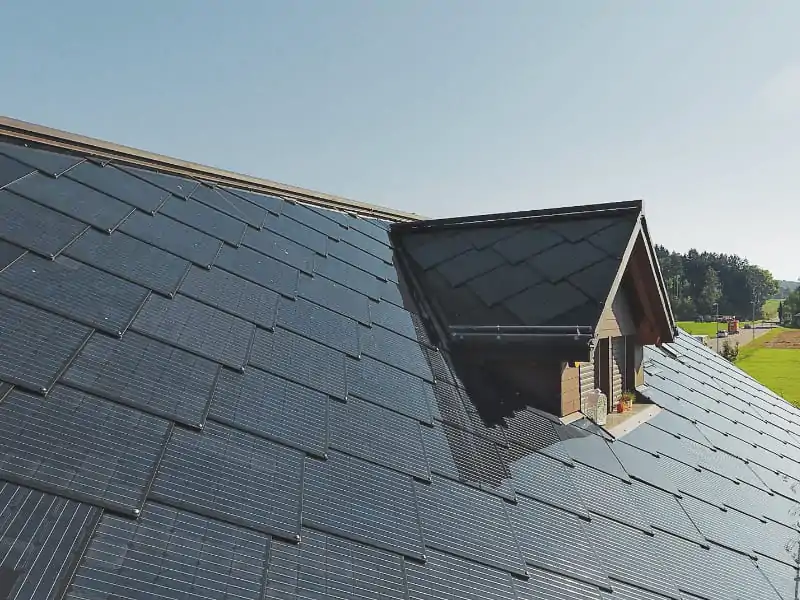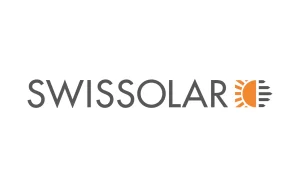To address the energy crisis across Europe, state and government leaders want to move quickly to promote solar roofs and, more broadly, green power generation.

In Switzerland: Solar obligation for new buildings with more than 300 m2 from 2024 (approx. 30% of new private buildings).
The UReK-S (the Environment Commission of the Council of States) wants to accelerate the expansion of solar energy. According to the commission, electricity production urgently needs to be increased. The additional electricity production must come from renewable energies in order to remain climate neutral.
3 new provisions are being made to accelerate this goal:
- Solar installations will become compulsory from 1 January 2024 for new buildings with an area of more than 300 m2 (building applications submitted before this date are not subject to the new obligation).
- To create rapid realisation of ground-mounted solar plants. This provision applies to plants with a high share of electricity generation in winter and is therefore particularly conceivable in the Alps.
- The federal infrastructure must be optimised for the use of solar energy by 2030.
What is the legal basis for solar roofs?
Article 45a (Energy Law – EnG) introduces the obligation to use solar energy for buildings with an area of more than 300 m2. A solar system, e.g. a photovoltaic or heating system, must be installed on the roofs or facades. The cantons can also extend this obligation to buildings with an area of less than 300 m2.
Article 45b additionally mentions that solar energy is to be used on federal infrastructure areas suitable for this purpose. These areas must be equipped for the generation of solar energy by 2030.
These laws have a direct impact on the MuKEn (Model Cantonal Energy Ordinances). The MuKEn contain a number of rules on which the cantons must base their energy policy in the building sector. In fact, energy policy in the building sector in Switzerland is the responsibility of the cantons. Clarifications that the energy regulations between the cantons are to be harmonised as far as possible and adapted to the European framework.
Now, private real estate (households and service companies) accounts for 40% of energy consumption in Switzerland and about one third of CO2 emissions (which are due in particular to heating systems).
It is the EnDK, the conference of the 26 energy directors of the cantons, which coordinates energy and climate policy and remains the central point of contact for the Confederation.
The EnDK is the initiator of the MuKEn 2014, which introduced the following rules:
- Building insulation: Renovations should at least comply with the Minergie standard in order to minimise heat and cold losses.
- Energy performance indicator “heat”: In new buildings, the total energy demand for heat generation should be minimised.
- Self-generation of electricity: New buildings must generate part of the energy consumed in the building themselves. Generating your own electricity is optional; if this is not possible, however, replacement costs must be paid.
In September 2021, only 17 cantons have implemented the MuKEn 2014. With a renovation rate of the building stock of almost 1% per year, it was urgent to drastically reduce CO2 emissions in the building sector, hence the acceleration desired by the UReK-S.
What is the legal basis for solar roofs in the European Union (EU)?
It is estimated that solar roofs could generate about a quarter of the EU’s electricity consumption, i.e. more than the share of natural gas used in the European energy mix.
The European Solar Roof Initiative announced in the framework of REPowerEU aims to rapidly exploit this potential. To achieve this, the Commission calls (in a note published in August) for necessary measures by the end of 2022. Under its latest guidelines, it states that:
- The duration of the approval procedure for solar installations on roofs will be limited to a maximum of three months (previously it took several years on average).
- The installation of solar energy on the roof will be mandatory for
- All new public and commercial buildings with an area of more than 250 m2 by 2026.
- All existing public and commercial buildings with an area of more than 250 m2 by 2027.
- All new residential buildings by 2029.
In particular, the project supports integrated photovoltaic (BIPV) systems, such as the SunStyle solar roofs, both for new buildings and for the renovation of existing buildings.
The Communication notes that Member States will have to implement national programmes to ensure the massive deployment of solar roof energy and energy storage solutions from 2023 onwards. EU funding is available to them for this purpose.
Will we see this acceleration concretely implemented? That depends on the actual commitment of member state governments, but public opinion already seems ready. For example, the Öko-Institut (a German environmental research institute recognised as a non-profit) recommends the introduction of a solar roof requirement in the EU from 31 December 2024, two years earlier than the Commission proposal (31 December 2026).
Do you have further questions regarding photovoltaics, or do you have a project that you need help with? Then contact us, we will be happy to assist you with individual advice.
For more information about SunStyle’s solar roof, visit sunstyle.com
Power your interest in the future of solar roofing by following us:
Instagram @sunstyle_solar
Facebook @sunstylesolar
LinkedIn linkedin.com/company/sunstylesolar
Youtube @youtube channel


